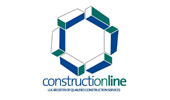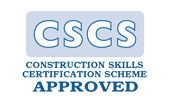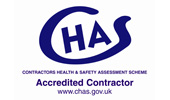Screed Specification
Screed Specification – Which Screed?
I’m Andy Parkin, Managing Director of the Multi-Award Winning Speed Screed. I’m here to talk about Screed Specification.
When faced with the huge choice of screeds that are available it can be a challenge to decide which is best for your project. This is when the screed specification becomes key. To cut through some of the jargon and help you choose the right screed for your project we have looked at some of the key factors should consider:
Location – Screed Specification
Be clear about where you will use the screed and what sort of impact that will have on the floor. This includes things like floor traffic, environment, drainage, insulation needs, whether underfloor heating is to be installed, and so on.
Type of Screed
The next critical screed specification to consider is the type of screed you need to fulfil the requirements of your location. The types of screed available include:
- Sand/Cement screeds – the most commonly found screed, used to provide a levelling base for final flooring layers. Not usually suitable as a base for resin screeds but special screeds may be available to accommodate this.
- Concrete screeds – often used where thicker floating screeds are needed, they are more liquid and easier to lay.
- Granolithic cement screeds – used for wearing surfaces and provide hard, long-lasting finishes.
- Polymer modified cementitious screeds – can be used for levelling or wearing and be used under resin screed.
- Self-Levelling screeds – usually pumped and need much less work than other types of screed.
There are specific factors to consider with these screeds such as compatibility with other materials and the manufacturer’s recommendations should be sought.
Thickness
Screed specifications often highlight the thickness of the screed needed in certain applications. However, these are only minimum values so it is important to refer back to the manufacturer’s instructions.
Thickness varies between projects, the type of screed used and how the screed is to be applied. Other factors need to be considered such as base layer quality, or if services are to be embedded in the screed and so on.
Bonded, Unbonded or Floating Screed?
This is another basic screed specification which plays a critical role in the decision-making process.
- Bonded Screed – Sits on the base slab and transmits all the forces through the bond to the base. Bonding must be done well especially on the edges to help prevent cracks from appearing.
- Unbonded screeds – used with damp proofing membrane placed beneath the screed and above the base surface. Good when a bonded screed is not appropriate. These are always thicker than a bonded screed because none of the forces are transferred to the base.
The screed must, therefore, be able to maintain an integrated surface without cracking or curling. It is essential to ensure that no perimeter walls, doors and so on are allowed to contact the screed during drying to avoid cracks forming.
- Floating screeds – these rest directly onto a thermal or acoustic insulation layer and they have to be able to take and distribute any loads on the floor. It can be difficult to compact these types of floor and this is aided by using a wetter mix. Again, avoiding building element contact with the floor helps prevent cracking during drying.
There are, of course, many other screed specifications to consider. Please contact us if you need more information. We love to help!
Our Accreditations
About Speed Screed
Speed Screed Limited was founded on the key principle of providing first-class customer service. It has since built itself an impressive reputation for delivering high-quality projects across the United Kingdom.
The company’s success is built on its belief in quality work, attention to detail, on-time completion, strong working partnerships and the recruitment of top-level staff. about us >








